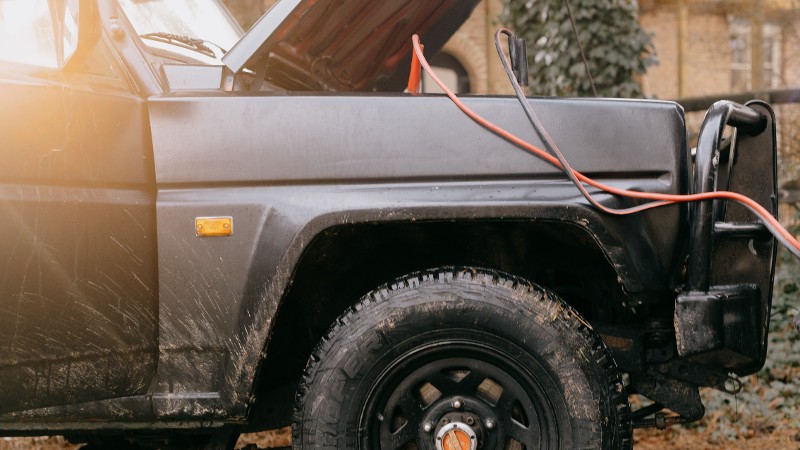We wouldn’t be surprised if you’ve never heard of alternators. While they are critical to the operation of a vehicle, they aren’t popular since most people never have to replace or repair them. As a result, you’ll hardly find any car owner that knows much about them. But if you want to know more about alternators, this article will equip you with all you need to know about these important components.
The B+ terminal connects to the battery, while D+ is equivalent in European alternators. The W terminal connects to the tachometer, which measures engine speed.
As you’ll later learn in this article, alternators have somewhat complex wiring, and you shouldn’t tamper with them unless you know what you are doing. Continue reading to learn more about alternators.
A Brief Overview Of Alternators
Alternators are easily among the most important components of a car. Their functions include keeping the engine running after ignition and generating electricity to power several car components. From radio to windshield wipers, headlights, dashboard sensors, and so on, the alternator provides the power these components need to function.
Your car’s alternator can supply power to the above components by converting mechanical energy into electrical energy. We’ll discuss this more later in this article. It’s also worth mentioning that alternators charge the car battery to ensure enough charge to start the vehicle.
The Terminals Of An Alternator
The average Joe can’t explain how an alternator works and isn’t interested in finding out. But you aren’t the average Joe, are you? You’ll find out how an alternator works below.
Even though alternators play a critical role in the operations of an engine, the average consumer will be hard-pressed to explain how they work. As such, no one expects you to know what the W terminal is or where you can find it.
There are several terminals on an alternator, and they include W, B, and D+.
The W Terminal
One of the terminals on an alternator is the W Terminal, which drives the tachometer. Chances are you are already familiar with the tachometer; if you are not, it’s an instrument that measures the rotation speed of your engine. The unit for rotational speed is revolutions per minute (RPM). This rotational speed indicates how hard your engine works, and you’ll find a value on the tachometer.
Another purpose of the tachometer is that it helps a driver to choose gear and throttle appropriate to their current driving conditions. And depending on the make and model of your car, your tachometer may be digital or analog.
Usually, you’ll find the W terminal near the bottom of an alternator. The terminal is presented as a short, thin, blue wire with a push-disconnect connection. In most cases, it’s easy to locate the W terminal. It’s worth mentioning that some newer models of cars may not have W terminals.
B+ And D+ On An Alternator
Alternators also have B+ and D+ terminals, which signify your battery’s positive and negative connections. Regular alternators have a B+ signal, while European alternators have a D+ signal.
For European alternators, D+ is the positive battery terminal, while D is the negative one. For a regular alternator, B+ is the positive battery terminal, while B is the negative one.

Is It Easy To Replace An Alternator?
Our candid advice – is don’t try to replace or repair your alternator unless you know what you are doing. And before you even attempt to replace an alternator, be sure the alternator is really bad.
Sometimes, issues from an alternator may not be from the alternator itself but from other components like the battery. In a nutshell, the alternator needs to be inspected and other components checked out before being replaced. It could also be that the drive belt has slipped off and needs to be reinstalled back to the normal position.
Many car owners can’t do all these, and it’s best to let a mechanic fix any problem with the alternator. But if you want to replace a broken alternator yourself, you’ll need some pieces of equipment to achieve this. Usually, the following will do the trick:
- A few wrenches.
- Sockets.
- Your car’s owner’s manual.
- Eye and hand protection gear.
- A replacement alternator.
With all these ready, the next thing is to find your car’s alternator. While alternators are generally located towards the front of the engine, you may need the owner’s manual to determine its exact position. You should have the owner’s manual handy during this process.
Disconnect the negative terminal of the battery, as you don’t want the alternator to be connected to the battery during the process. The next step is to remove the serpentine belt, and you’ll find the belt tensioner near the alternator. If this is confusing for you, you can watch explainer videos online.
You can easily swap the old alternator with the belt off the alternator for a new one. It’s worth mentioning that some extra steps may be involved, but generally, the process is the same for almost all vehicle models.
Cost Of Replacing Your Alternator
Replacing an alternator can cost anywhere from $300 to $500. This value means new alternators are rarely expensive, and you will unlikely spend over this range for a new one. It’s also worth mentioning that most replacement alternators are refurbished or remanufactured, although you can also find brand-new ones in the market.
While alternators aren’t expensive, you will have to pay the mechanic doing the replacement job, and this is where things get expensive. Depending on your area and local rate, you can pay almost double the cost of the alternator in labor fees, which is why many people try to replace their alternators themselves. But if you have the budget, it’s better to pay a professional to do the replacement job than screw things up.

